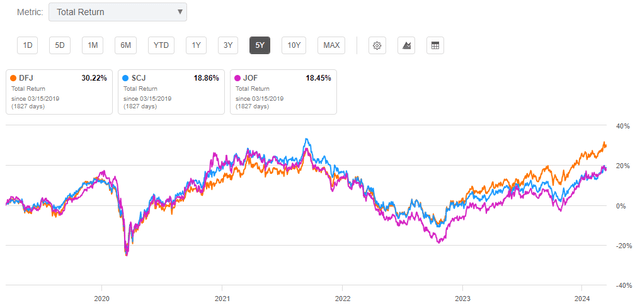Autodesk’s Integration of AI in Manufacturing Software at J.P. Morgan Industrials Conference
March 14, 2024 | by stockcoin.net

This article provides a comprehensive summary of Autodesk, Inc.’s participation in the J.P. Morgan 2024 Industrials Conference. The conference call featured Jeff Kinder, the Executive Vice President of Product Development & Manufacturing Solutions, and Simon Mays-Smith, the Investor Relations representative for Autodesk. The discussion focused on the integration of artificial intelligence (AI) into Autodesk’s manufacturing software and how it sets them apart from competitors. With over 10 years of experience using AI, particularly generative design, in manufacturing, Autodesk has invested in the cloud and developed a consumption model to support AI services. AI is already being utilized in their products such as Construction IQ and automated drawings and tooling in manufacturing. While the widespread adoption of AI by customers is still in its early stages, Autodesk is already implementing AI in its offerings. Competing with companies like SolidWorks, Siemens, PTC, and Dassault in the CAD and PLM space, Autodesk sees an opportunity to capture market share from SolidWorks in the mid-market segment. Their goal is to provide scalable cloud-based solutions that cater to both the mid-market and enterprise segments, with a focus on a modern and user-friendly interface as a key differentiator. Offering more capabilities than SolidWorks, Autodesk’s Fusion software eliminates the need for additional standalone solutions and aims to disrupt the market by envisioning end-to-end design and manufacturing processes in the cloud, with connected teams and data.
Autodesk’s Participation in J.P. Morgan Industrials Conference
Overview of Autodesk’s participation
Autodesk, Inc. recently participated in the J.P. Morgan 2024 Industrials Conference. The conference call included Jeff Kinder, the Executive Vice President of Product Development & Manufacturing Solutions, and Simon Mays-Smith, the Investor Relations representative for Autodesk. The focus of the discussion was on the integration of AI into Autodesk’s manufacturing software and how it sets the company apart from its competitors.
Speakers at the conference
During the conference, Jeff Kinder, the Executive Vice President of Product Development & Manufacturing Solutions, and Simon Mays-Smith, the Investor Relations representative for Autodesk, presented and answered questions from investors. Their combined expertise and knowledge allowed for a comprehensive understanding of Autodesk’s strategies and goals.
Discussion on the integration of AI in Autodesk’s manufacturing software
One of the main topics of the conference call was the integration of artificial intelligence (AI) into Autodesk’s manufacturing software. Autodesk has been actively using AI, specifically generative design, in manufacturing for over a decade. This integration has enabled Autodesk to provide innovative solutions to their customers, streamlining their design and manufacturing processes.
Differentiation from competitors
Autodesk differentiates itself from its competitors by its long-standing experience in using AI in manufacturing. While other companies may still be in the early stages of AI adoption, Autodesk has already implemented AI in its products. This gives Autodesk a competitive edge and positions them as a leader in the industry.
Autodesk’s Experience with AI in Manufacturing
Autodesk’s use of AI in manufacturing for over 10 years
Autodesk has been at the forefront of AI adoption in the manufacturing industry for over a decade. Their early investment in AI has allowed them to develop robust and mature AI capabilities. This experience gives Autodesk a deep understanding of AI’s potential and its application in improving manufacturing processes.
Investment in the cloud and development of a consumption model
To support its AI services, Autodesk has heavily invested in the cloud and developed a consumption model. This investment ensures that Autodesk’s AI-powered solutions are scalable and accessible to a wide range of customers. By leveraging the cloud, Autodesk can deliver powerful AI capabilities while minimizing the need for extensive on-premise infrastructure.
AI already being used in Autodesk’s products
Autodesk’s commitment to AI is evident in its existing products. For example, Construction IQ, an AI-powered analytics platform, enables construction teams to identify and mitigate safety and quality risks. Additionally, Autodesk’s manufacturing software incorporates AI in automating tasks like generating drawings and optimizing tooling. These practical applications of AI demonstrate Autodesk’s dedication to providing value to its customers.
Examples of AI integration – Construction IQ, automated drawings, tooling
One of the prominent examples of AI integration in Autodesk’s offerings is Construction IQ. By analyzing project data, Construction IQ can predict potential safety issues and provide recommendations to prevent accidents. This proactive approach sets Autodesk’s software apart from competitors and underscores its dedication to leveraging AI for the benefit of its customers. In addition, AI is used to automate the creation of drawings and optimize tooling, further streamlining the design and manufacturing processes.
Adoption of AI in Manufacturing
Current stage of AI adoption by customers
While broader adoption of AI in the manufacturing industry is still in its early stages, Autodesk is already implementing AI in its offerings. This proactive approach allows Autodesk’s customers to gain a competitive advantage by utilizing AI to optimize their design and manufacturing processes. As AI continues to gain traction in the industry, Autodesk is well-positioned to support its customers’ needs.
Autodesk’s implementation of AI in its offerings
Autodesk is committed to integrating AI into its offerings across multiple industries. By leveraging its expertise and experience in AI, Autodesk aims to provide its customers with solutions that enhance their productivity, improve safety, and optimize their processes. This commitment to implementing AI sets Autodesk apart from competitors who may be slower in embracing this transformative technology.
Opportunity to take market share from competitors
Autodesk sees an opportunity to gain market share from competitors, especially in the mid-market segment. With its strong focus on AI and cloud-based solutions, Autodesk offers a compelling value proposition to mid-sized companies looking to enhance their design and manufacturing capabilities. By providing scalable solutions tailored to the needs of the mid-market segment, Autodesk aims to capture market share from competitors like SolidWorks.
Targeting the mid-market segment
Autodesk recognizes the potential of the mid-market segment and has tailored its offerings accordingly. By targeting this segment, Autodesk aims to address the specific needs and challenges faced by mid-sized companies. With its AI-powered solutions and scalable cloud-based offerings, Autodesk provides mid-market businesses with the tools they need to compete and thrive in a rapidly evolving industry.
Scalable Cloud-Based Solutions
Autodesk’s aim to provide scalable cloud-based solutions
Autodesk places a strong emphasis on providing scalable cloud-based solutions to its customers. By leveraging the power of the cloud, Autodesk ensures that its customers have access to the computing resources they need to run complex simulations, visualize designs, and collaborate effectively. This scalability allows customers to tackle projects of various sizes while minimizing upfront infrastructure costs.
Targeting both mid-market and enterprise segments
Autodesk’s scalable cloud-based solutions cater to both the mid-market and enterprise segments. Whether a company is a mid-sized manufacturer or a large multinational corporation, Autodesk has the capabilities to meet their unique requirements. This flexibility positions Autodesk as a trusted partner for businesses of all sizes, providing them with the tools necessary to drive innovation and improve their design and manufacturing processes.
Differentiating factor – modern and easy-to-use interface
An important differentiating factor for Autodesk is its modern and easy-to-use interface. By focusing on user experience, Autodesk ensures that its software is intuitive, enabling users to quickly harness the power of its cloud-based solutions. This user-friendly approach distinguishes Autodesk from competitors and positions them as a leader in providing accessible and efficient software tools.
Comparison with competitors like SolidWorks
SolidWorks is one of the main competitors of Autodesk in the CAD and PLM space. While SolidWorks has its strengths, Autodesk’s scalable cloud-based solutions give them a competitive edge. By leveraging the cloud and embracing AI, Autodesk offers a comprehensive suite of tools that empower customers to streamline their design and manufacturing processes. This sets Autodesk apart from SolidWorks and positions them as a leader in the industry.
Capabilities of Autodesk’s Software Solution
Fusion’s extensive capabilities compared to SolidWorks
Autodesk’s software solution, Fusion, offers extensive capabilities that surpass those of SolidWorks. Fusion combines the power of cloud computing, AI, and intuitive user interfaces to provide a comprehensive suite of tools for design and manufacturing. From concept development to production, Fusion enables connected teams to collaborate seamlessly and efficiently, optimizing the end-to-end design and manufacturing processes.
Elimination of need for additional standalone solutions
By providing a comprehensive software solution, Autodesk eliminates the need for additional standalone solutions. Fusion’s capabilities cover a wide range of design and manufacturing processes, reducing the complexity and cost associated with integrating multiple software tools. This integration streamlines workflows and enhances productivity, enabling customers to focus on innovation and bringing their products to market faster.
Integration of end-to-end design and manufacturing processes
Autodesk’s software solution emphasizes the integration of end-to-end design and manufacturing processes. Fusion enables connected teams to collaborate throughout the entire product development lifecycle, from initial design to manufacturing and beyond. This integration eliminates silos, enhances communication, and ensures that design intent is translated seamlessly into physical products, resulting in higher quality and more efficient manufacturing.
Emphasis on connected teams and data
Autodesk recognizes the importance of connected teams and data in driving successful design and manufacturing processes. Through Fusion, Autodesk enables teams to collaborate in real-time regardless of their physical locations. This connectivity facilitates the exchange of ideas, streamlines decision-making, and ensures that all stakeholders are aligned towards the common goal of delivering high-quality and innovative products.
Competitors in the CAD and PLM Space
Competitor companies – SolidWorks, Siemens, PTC, Dassault
Autodesk faces competition from various companies in the CAD and PLM space. SolidWorks, Siemens, PTC, and Dassault are among the key competitors vying for market share in this industry. Each company brings its own strengths and expertise to the table, creating a competitive landscape where innovation and differentiation are vital for success.
Comparison with these companies
While Autodesk competes with SolidWorks, Siemens, PTC, and Dassault, each company has its own unique value proposition. Autodesk’s focus on AI integration and scalable cloud-based solutions sets them apart from their competitors. By leveraging AI and the cloud, Autodesk offers customers powerful tools to optimize their design and manufacturing processes, positioning themselves as a leader in the industry.
Autodesk’s competitive advantages
Autodesk has several competitive advantages that allow them to stand out in the CAD and PLM space. Firstly, their extensive experience in using AI in manufacturing sets them apart from competitors who may still be in the early stages of AI adoption. Additionally, Autodesk’s scalable cloud-based solutions give them a competitive edge by providing customers with the flexibility and computing power they need. Finally, Autodesk’s emphasis on user-friendly interfaces ensures that customers can quickly and intuitively utilize their software, enhancing productivity and value.
Strategies to compete in the market
To compete effectively in the CAD and PLM market, Autodesk employs several key strategies. They prioritize constant innovation and investment in AI, ensuring that their solutions remain at the forefront of technology. Additionally, Autodesk focuses on understanding customer needs and tailoring their offerings to address those needs, particularly in the mid-market segment. By providing scalable cloud-based solutions with a modern and easy-to-use interface, Autodesk establishes itself as a trusted partner for businesses of all sizes.
Autodesk’s Vision for Disruption in the Market
Autodesk’s vision for end-to-end design and manufacturing processes
Autodesk envisions a future where end-to-end design and manufacturing processes are seamlessly integrated. Through their cloud-based solutions and AI capabilities, Autodesk aims to enable connected teams to collaborate effectively, streamline workflows, and drive innovation. By embracing emerging technologies and leveraging their extensive expertise, Autodesk seeks to revolutionize the way products are designed and manufactured.
Importance of cloud-based solutions and connected teams
Autodesk recognizes the importance of cloud-based solutions and connected teams in achieving their vision. Cloud-based solutions offer the scalability, flexibility, and computing power necessary to handle increasingly complex design and manufacturing processes. By connecting teams in real-time, Autodesk ensures that all stakeholders have access to the latest information, fostering collaboration and informed decision-making.
Expected impact on the market
Autodesk’s disruptive vision for end-to-end design and manufacturing processes is expected to have a significant impact on the market. By streamlining workflows and empowering connected teams, Autodesk’s solutions enable companies to bring products to market faster, with higher quality and increased innovation. This disruption will reshape the industry and set new standards for design and manufacturing excellence.
Driving innovation and disruption
Innovation and disruption are at the core of Autodesk’s vision. By investing in AI, cloud-based solutions, and intuitive interfaces, Autodesk drives the industry forward and equips its customers with the tools necessary to stay ahead of the curve. Through continuous research and development, Autodesk ensures that its solutions remain innovative and adaptive, enabling companies to overcome challenges and seize new opportunities in the rapidly evolving landscape of design and manufacturing.
In conclusion, Autodesk’s participation in the J.P. Morgan Industrials Conference showcased their strong commitment to integrating AI into their manufacturing software and differentiating themselves from competitors. With over a decade of experience in AI and a focus on scalable cloud-based solutions, Autodesk is well-positioned to drive disruption in the CAD and PLM market. By providing extensive capabilities in their software solution, targeting the mid-market segment, and emphasizing connected teams and data, Autodesk sets themselves apart from competitors and aims to revolutionize the way products are designed and manufactured.

RELATED POSTS
View all





